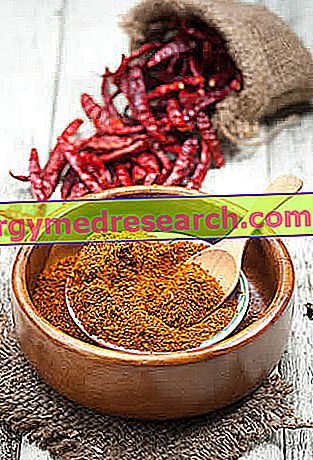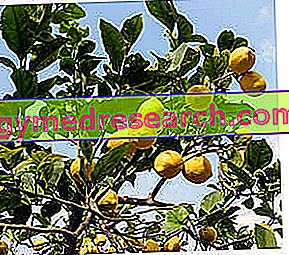Generality
Cayenne pepper is the name of some "peperoncini", or spicy foods that are used as a spice, an ingredient or a side dish.
The name derives from the city of Cayenne, located in French Guyana (South America).

From the botanical point of view, the word cayenne pepper has no meaning. It is a generic name that regards some shrubs belonging to the Solanaceae Family, Genre Capsicum, Specie annuum . The most common are the Bell Pepper and Jalapeños varieties.
The most well-known spices derived from Cayenne pepper are paprika and chilli powder or flakes. They are produced by drying and grinding the fruit, with or without the placenta and the seeds (rich in capsacinoids - spicy molecules).
Sweet paprika is the only spice based on Cayenne pepper that does not have a spicy taste, as the fruits are totally deprived of the placenta and seeds.
However, Cayenne pepper is used mainly in the cooking of spicy dishes (especially in the countries of origin); it is used fresh, dry (powder or flakes) and in sorrel sauce.
The spiciness of the Cayenne pepper reaches an average score of 30, 000 to 50, 000 units on the Scoville scale (rather moderate value).
Also read: Habanero and Naga Morich.
Cayenne pepper and Health
Thanks to its capsaicin content (a major exponent of capsacinoids), Cayenne pepper facilitates vasodilation and sweating, and increases the dispersion and perception of heat.
Some animal studies have shown that chili peppers tend to increase metabolism, favoring weight loss. On humans, from the application point of view, these effects seem to have a marginal value. The mechanism underlying the weight loss would be:
- Vasodilation and greater blood flow to the tissues (therefore of oxygen and nutrients).
- Increased calorie expenditure due to oxidation of energy substrates.
Some claim that cayenne pepper has an aphrodisiac power; the results of scientific research are inconclusive or mention a clear involvement of autosuggestion.
Cayenne pepper positively (but briefly) regulates high blood pressure, thanks to generalized vasodilation.
Cayenne pepper increases appetite, salivation and the production of digestive juices. On the other hand, it seriously damages the inflamed mucous membranes and is contraindicated in case of: gastritis and ulcer, gastroesophageal reflux, irritable bowel and other intestinal diseases, anal fissures and hemorrhoid inflammation.
Cayenne pepper is also famous for its high vitamin C (ascorbic acid) content. However, this water-soluble vitamin with antioxidant power is lost through aging and cooking; this means that the dry or cooked food brings drastically lower concentrations than the raw and fresh one.
Cayenne pepper contains excellent levels of carotenoids (provitamins A). They are also powerful antioxidants and participate in the fight against free radicals.
Chili is not among the richest sources of antioxidant vitamin E (in seeds), but its concentration is useful in achieving the recommended daily ration.
Among the mineral salts, especially potassium stands out; manganese intake is appreciable.

In Europe and North America, Cayenne pepper is used mainly as a spice. On the contrary, in the East and in Central-South America it represents a customary food; if consumed fresh, contribute to the supply of food water.
Kitchen
Cayenne pepper is a very popular and widespread spice all over the world. It is used in fresh, dried, powdered and flake form.
It is a key ingredient for a wide variety of spicy sauces, especially those that use vinegar as a preservative.
Cayenne pepper in sauce is often spread in sandwiches to give it a spicy flavor.
There are also several energy drinks (energy drinks) that contain Cayenne pepper extract.
Cultivation notes
There are many types of Cayenne pepper, but they all require at least 100 days of growth and maturation.
Cayenne pepper prefers a warm, humid climate and a soil rich in nutrients.
The Capsicum annuum plants grow up to about 0.5-1 meters in height and must be spaced at least 1 meter apart. Reducing this parameter to 30cm decreases single productivity but increases per surface.
In subtropical and tropical regions, cayenne pepper is a perennial plant; however, in temperate climates it assumes the role of annual vegetable. In winter, Cayenne pepper can be placed indoors and warm, taking care of pruning and ensuring good sun exposure.



